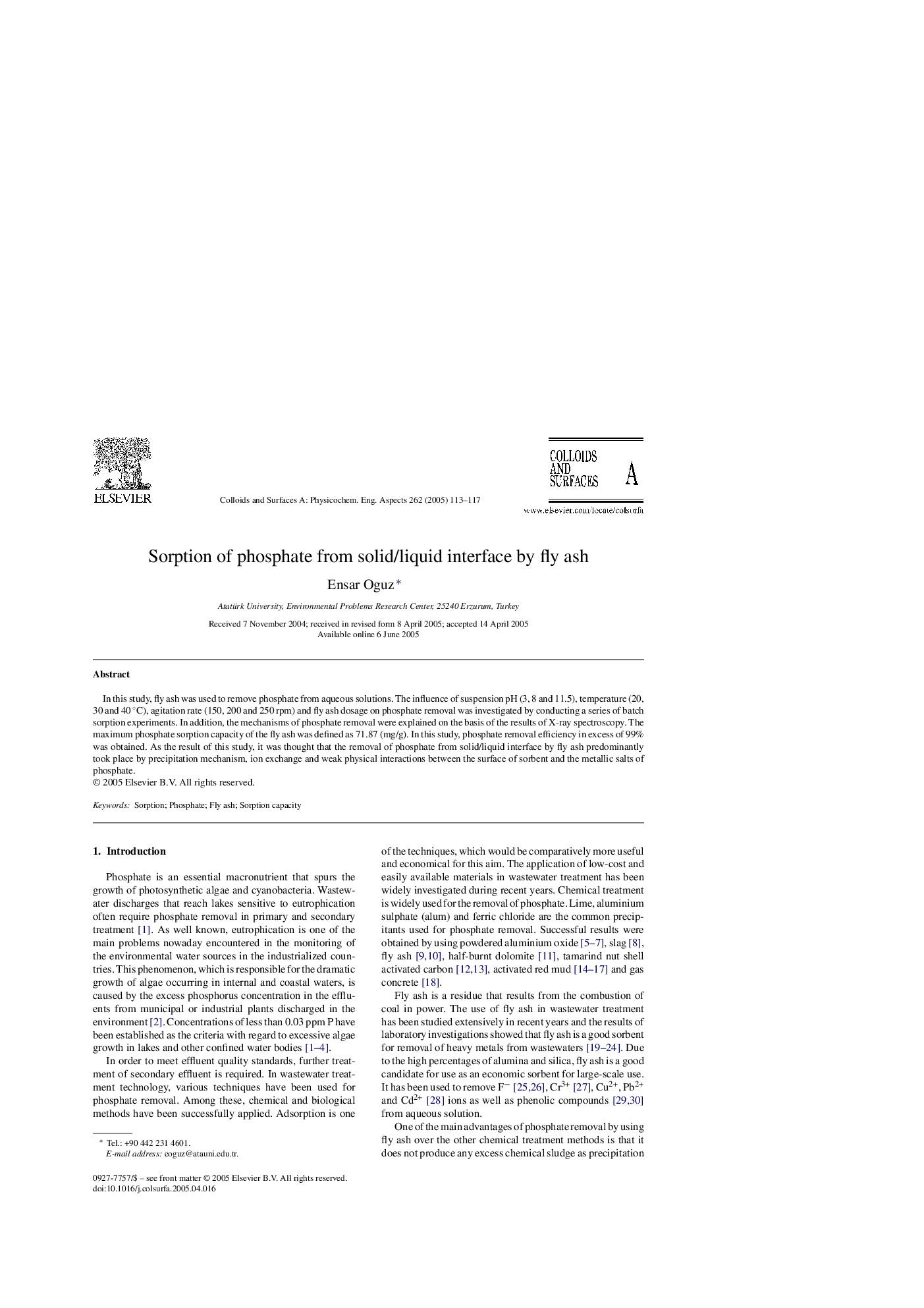| Article ID | Journal | Published Year | Pages | File Type |
|---|---|---|---|---|
| 9675810 | Colloids and Surfaces A: Physicochemical and Engineering Aspects | 2005 | 5 Pages |
Abstract
In this study, fly ash was used to remove phosphate from aqueous solutions. The influence of suspension pH (3, 8 and 11.5), temperature (20, 30 and 40 °C), agitation rate (150, 200 and 250 rpm) and fly ash dosage on phosphate removal was investigated by conducting a series of batch sorption experiments. In addition, the mechanisms of phosphate removal were explained on the basis of the results of X-ray spectroscopy. The maximum phosphate sorption capacity of the fly ash was defined as 71.87 (mg/g). In this study, phosphate removal efficiency in excess of 99% was obtained. As the result of this study, it was thought that the removal of phosphate from solid/liquid interface by fly ash predominantly took place by precipitation mechanism, ion exchange and weak physical interactions between the surface of sorbent and the metallic salts of phosphate.
Related Topics
Physical Sciences and Engineering
Chemical Engineering
Colloid and Surface Chemistry
Authors
Ensar Oguz,
